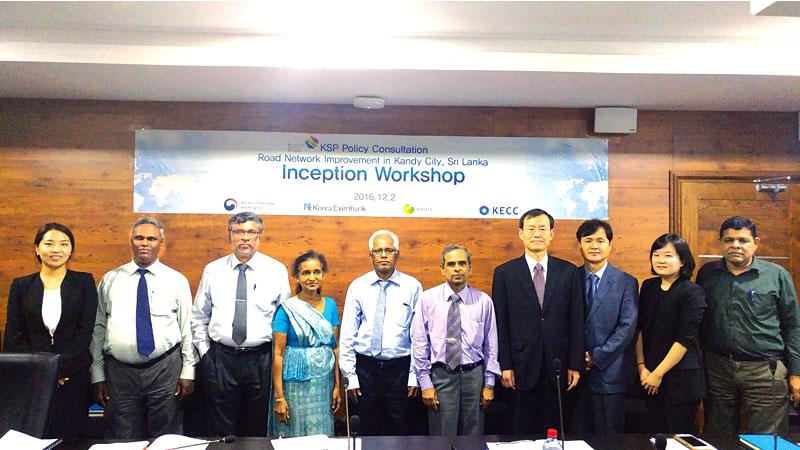
As the second largest city in Sri Lanka, Kandy is geographically located at a nodal point of major road networks in Sri Lanka. However, at present, the city is plagued with increasing traffic congestion caused by unsystematic road networks.
There is a great need for a comprehensive study to develop a systematic traffic network that takes into consideration the urban expansion of the city.
The Export-Import Bank of Korea (Korea Eximbank) has agreed to support the development of a master plan to strengthen the connectivity of the traffic network in Kandy city through a Knowledge Sharing Program (KSP) to address this issue and a Korean delegation conducted its inception workshop with Road Development Authority (RDA) on Friday. Considering the historic, commercial and geographic significance of Kandy city, the insufficiency of an efficient road network becomes a greater challenge that impedes the economic and social development of the city.
Narrow access routes, hilly terrain and being located in an environmentally and historically sensitive area severely restricts the smooth traffic flow within the city.
The Korea Eximbank hopes to share the traffic network expansion experience of Korea with Sri Lanka by supporting the development of this plan which strengthens the accessibility between the Northern and the Eastern parts of Kandy.
Members of the Korean consultant team said their master plan will take into consideration other ongoing developments in Kandy city such as construction of the Central Expressway and the proposed 5.5 km by-pass Kandy tunnel to create more synergy in their plan. The scope of this KSP policy consultation includes analysing the current and future traffic issues and providing capacity building and dissemination programs to RDA officials. An efficient road network in Kandy, will improve not only the accessibility and liveability but also the investment attractiveness of the city.
